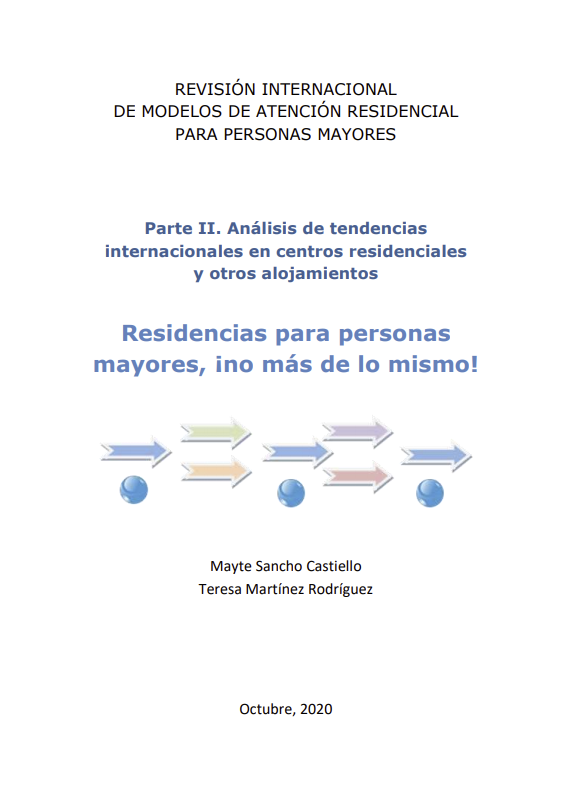International review of models of residential care for older people. Part II. Analysis of international trends in residential care and other accommodations.

This second report is the second part of the International Review of Residential Models for the Elderly study, commissioned by the Social Services Management of the Junta de Castilla y León in the context of the drafting of its new Residential Care law.
It analyses from a qualitative point of view the main international trends observed in the residential models that offer long-term care for the elderly in different countries that stand out for their innovative trajectory in this field. It also highlights the most innovative elements found, because in some way they have enabled these countries to advance along the path of care transformation.
This report is based on the first part of this study, the documentary review carried out by the SIIS in seven countries: Canada (Ontario), France, Germany, the Netherlands, Sweden, the United States and the United Kingdom. This first part offers an overview of the different models and their evolution over the last few decades, describing different aspects such as the type of centres existing in each place, their organisation, the regulations governing them, their professionals, the characteristics of the centres, the main management elements, the model of care or the systems of inspection and evaluation of the quality provided. This has made it possible to identify a set of trends referring both to the planning, management and evaluation of services and to key elements in the definition of the care model. With the aim of completing this first approach, this second report has taken into account the main evidence and conclusions of technical documents and scientific articles published in recent years in relation to different issues relevant to the transformation of residential services. In addition, it also incorporates the authors' knowledge extracted from on-site visits to the 4 centres and resources of interest included in this work. This is essential to complete the vision offered by the analysis of the regulatory and quantitative framework of the resources.
Throughout seven chapters, different themes are developed which are considered key to orientate and consolidate the change in the residential model for the elderly initiated in these years in the community of Castilla y León. The eighth chapter, which closes this report, is dedicated to offering a summary of the main conclusions, as well as to outlining some keys for the future in order to continue moving forward.
Professionals
Other Professionals
- Teresa Martínez Rodríguez

